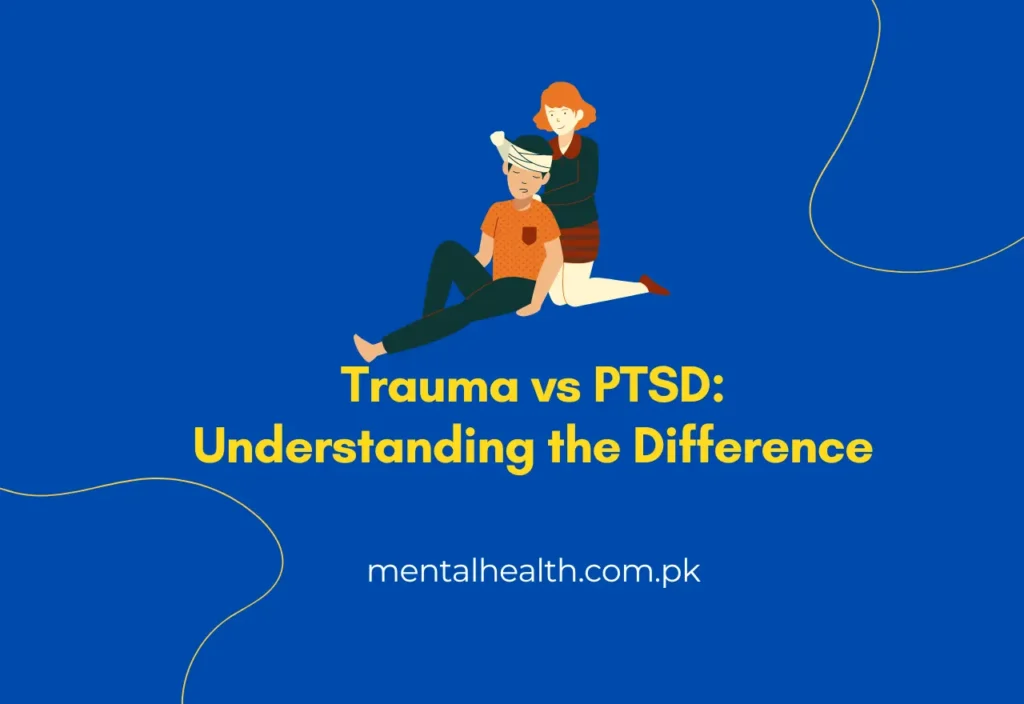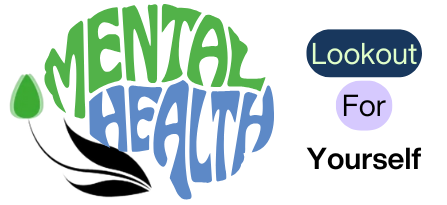Trauma vs PTSD: Understanding the Difference
Trauma and Post-Traumatic Stress Disorder (PTSD) are terms often used interchangeably, but they represent different experiences and psychological conditions. While both involve distressing or overwhelming events, not all trauma leads to PTSD, and the two require different approaches for healing. In this blog, we’ll explore the differences between trauma and PTSD, their symptoms, causes, and ways to manage them.
Table of Contents
What Is Trauma?
Trauma refers to any deeply distressing or disturbing experience that overwhelms an individual’s ability to cope. It can result from various events such as accidents, natural disasters, violence, abuse, or the sudden loss of a loved one. Trauma affects people differently, and what may be traumatic for one person might not be for another.
Types of Trauma
There are three main types of trauma:
- Acute Trauma: This type of trauma results from a single event, such as a car accident, a robbery, or witnessing violence.
- Chronic Trauma: This occurs when a person experiences repeated and prolonged exposure to traumatic events, such as ongoing abuse, domestic violence, or living in a war zone.
- Complex Trauma: This involves exposure to multiple traumatic events, often of an invasive, interpersonal nature. For example, someone who has experienced childhood abuse, neglect, and later in life, intimate partner violence, may suffer from complex trauma.
Symptoms of Trauma
The symptoms of trauma vary, but they typically involve emotional, physical, and behavioral responses:
- Emotional Symptoms: Shock, denial, anger, sadness, shame, and guilt. These emotions may come and go unpredictably, or be triggered by reminders of the event.
- Physical Symptoms: Fatigue, difficulty sleeping, headaches, gastrointestinal issues, and increased heart rate.
- Behavioral Symptoms: Avoiding places, people, or activities that remind you of the event, difficulty concentrating, and irritability.
What Is PTSD?
Post-Traumatic Stress Disorder (PTSD) is a specific mental health condition that can develop after experiencing or witnessing a traumatic event. While not everyone who experiences trauma develops PTSD, certain risk factors like the severity and duration of the trauma, a person’s coping abilities, and their support system can increase the likelihood.
Symptoms of PTSD
The symptoms of PTSD are more severe and long-lasting than general trauma and fall into four main categories:
- Intrusive Thoughts: Flashbacks, nightmares, and distressing memories of the traumatic event that can come up unexpectedly.
- Avoidance: Deliberately avoiding places, people, or activities that remind you of the traumatic event. You may also avoid thinking or talking about the trauma.
- Negative Thoughts and Feelings: Experiencing negative changes in mood and thinking patterns. This can include feelings of hopelessness, detachment from loved ones, difficulty experiencing positive emotions, and distorted beliefs about yourself and others.
- Hyperarousal: This includes being easily startled, feeling tense, having difficulty sleeping, and engaging in self-destructive behavior, such as substance abuse.

Key Differences Between Trauma and PTSD
Duration and Intensity:
- Trauma can be short-term or long-term but doesn’t necessarily disrupt your daily life permanently. Many people recover from trauma over time, especially with the right support.
- PTSD, on the other hand, involves symptoms that last for more than a month and cause significant impairment in personal, social, or professional areas of life. If untreated, PTSD can last for years.
Symptoms:
- Trauma symptoms are generally broader, ranging from emotional distress to physical ailments, but they may not include the specific intrusive and hyperarousal symptoms seen in PTSD.
- PTSD symptoms are more specific, including persistent re-experiencing of the event, avoidance behaviors, negative mood changes, and heightened reactions (e.g., being constantly on edge).
Triggers and Reactions:
- People with trauma may be upset or anxious when reminded of the event, but these feelings might subside with time.
- People with PTSD experience intense and persistent reactions to trauma-related triggers. Even years later, a sight, sound, or smell associated with the trauma can cause flashbacks or overwhelming anxiety.
Neurobiological Differences:
Trauma impacts the brain, but PTSD affects it in a more profound and chronic way. Research shows that people with PTSD have heightened activity in the amygdala (the part of the brain responsible for fear responses) and reduced activity in areas of the brain that regulate emotions, like the prefrontal cortex.
Managing Trauma
Managing trauma involves building coping strategies that allow individuals to process their experiences and heal. Some strategies include:
- Talking about it: Speaking with a trusted friend, family member, or therapist can help release built-up emotions and foster understanding.
- Journaling: Writing down thoughts and feelings can help organize and make sense of them.
- Self-care: Regular physical activity, healthy eating, adequate sleep, and engaging in relaxing activities can help the body and mind recover.
- Grounding Techniques: Mindfulness, deep breathing exercises, and meditation can help you stay present and reduce feelings of overwhelm.
Treatment for PTSD
While trauma can often be managed with self-care and social support, PTSD requires professional treatment. The most effective treatments for PTSD include:
- Cognitive Behavioral Therapy (CBT): CBT helps individuals understand and change their thoughts about the trauma. Techniques like exposure therapy, which helps you gradually face your triggers, can reduce PTSD symptoms.
- Eye Movement Desensitization and Reprocessing (EMDR): This therapy uses guided eye movements to help people process and make sense of trauma.
- Medications: Antidepressants, such as selective serotonin reuptake inhibitors (SSRIs), can help manage symptoms of PTSD, particularly anxiety and depression.
- Support Groups: Connecting with others who have experienced trauma or PTSD can provide comfort, reduce feelings of isolation, and offer new coping strategies.
When to Seek Help
If you or someone you know is struggling with trauma or PTSD, it’s important to seek professional help. Trauma that interferes with daily functioning or leads to severe emotional distress may require therapy to process. If you’re experiencing PTSD symptoms such as flashbacks, avoidance, or hypervigilance, early intervention can lead to better outcomes.
Conclusion
While trauma and PTSD are closely related, understanding the differences between the two is crucial for proper treatment and healing. Trauma can manifest as emotional, physical, or behavioral symptoms following a distressing event, but it doesn’t always lead to PTSD. PTSD, on the other hand, is a specific condition with defined symptoms that can develop after trauma and requires targeted treatment. Whether you or a loved one is dealing with trauma or PTSD, support and effective interventions are available to aid in recovery and improve mental health.

